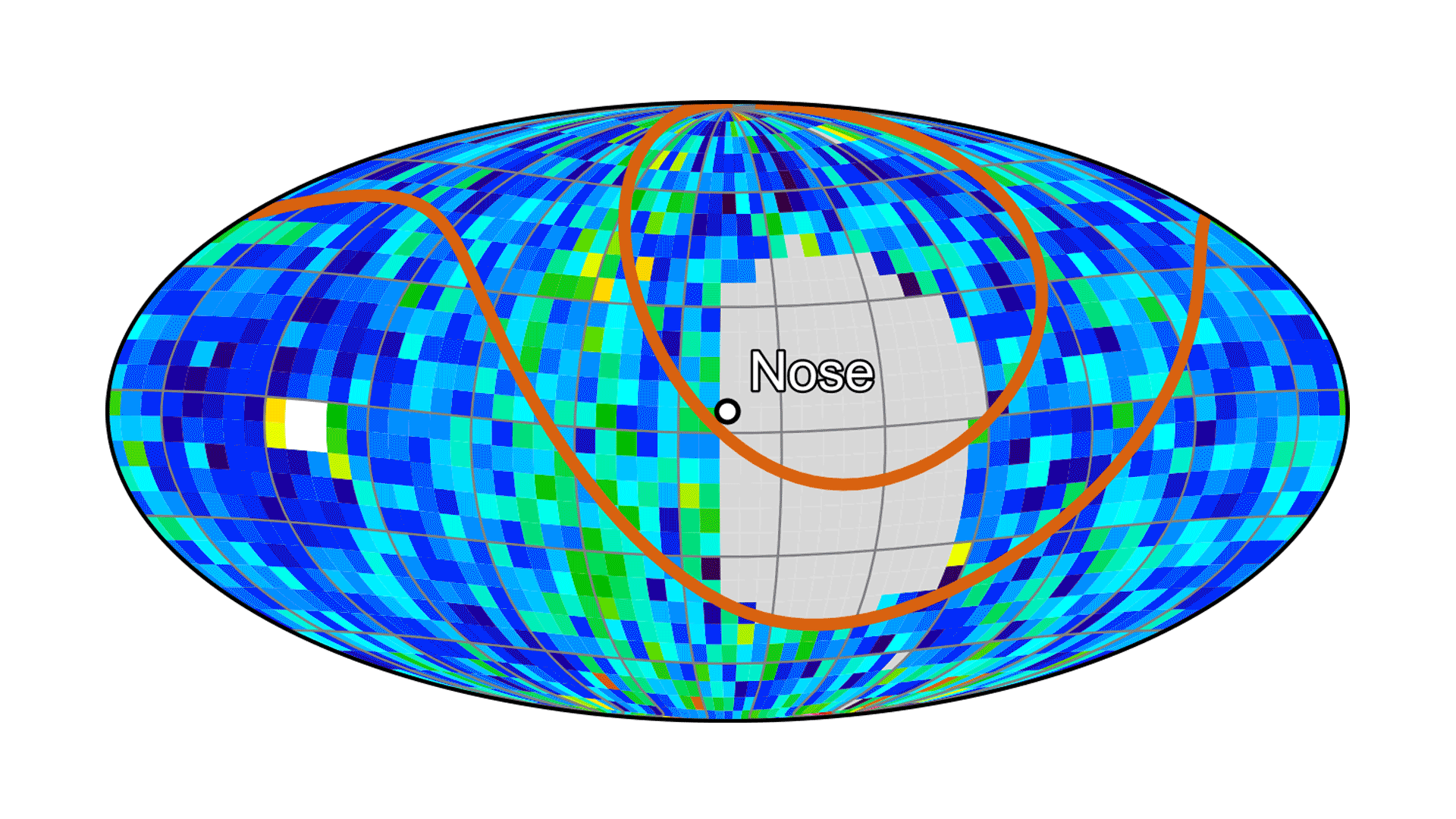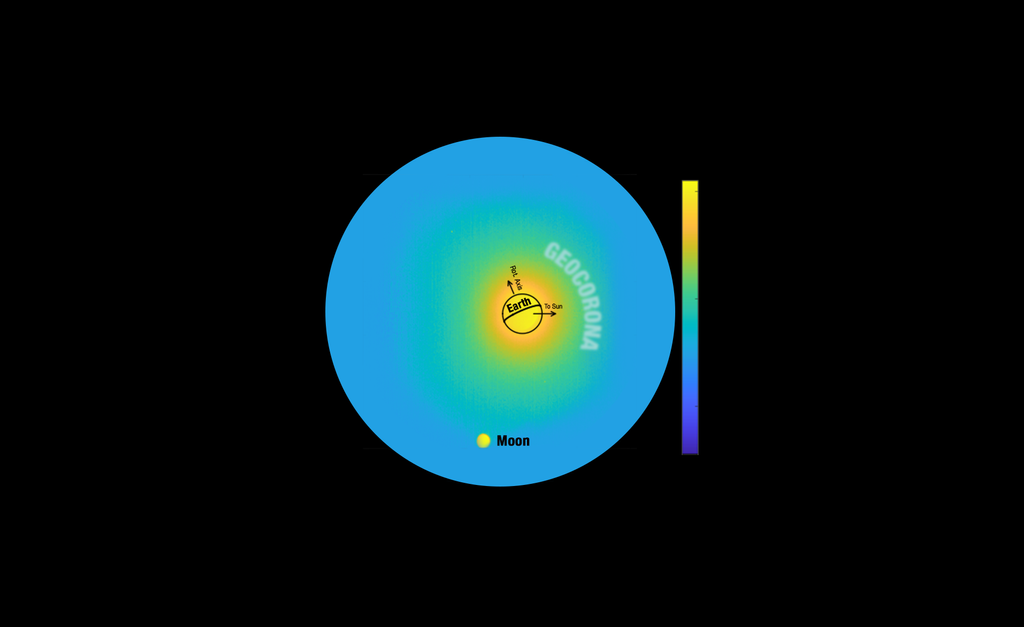1 min read
Simulated Thermal Emission Spectrum of Exoplanet LHS 3844 b
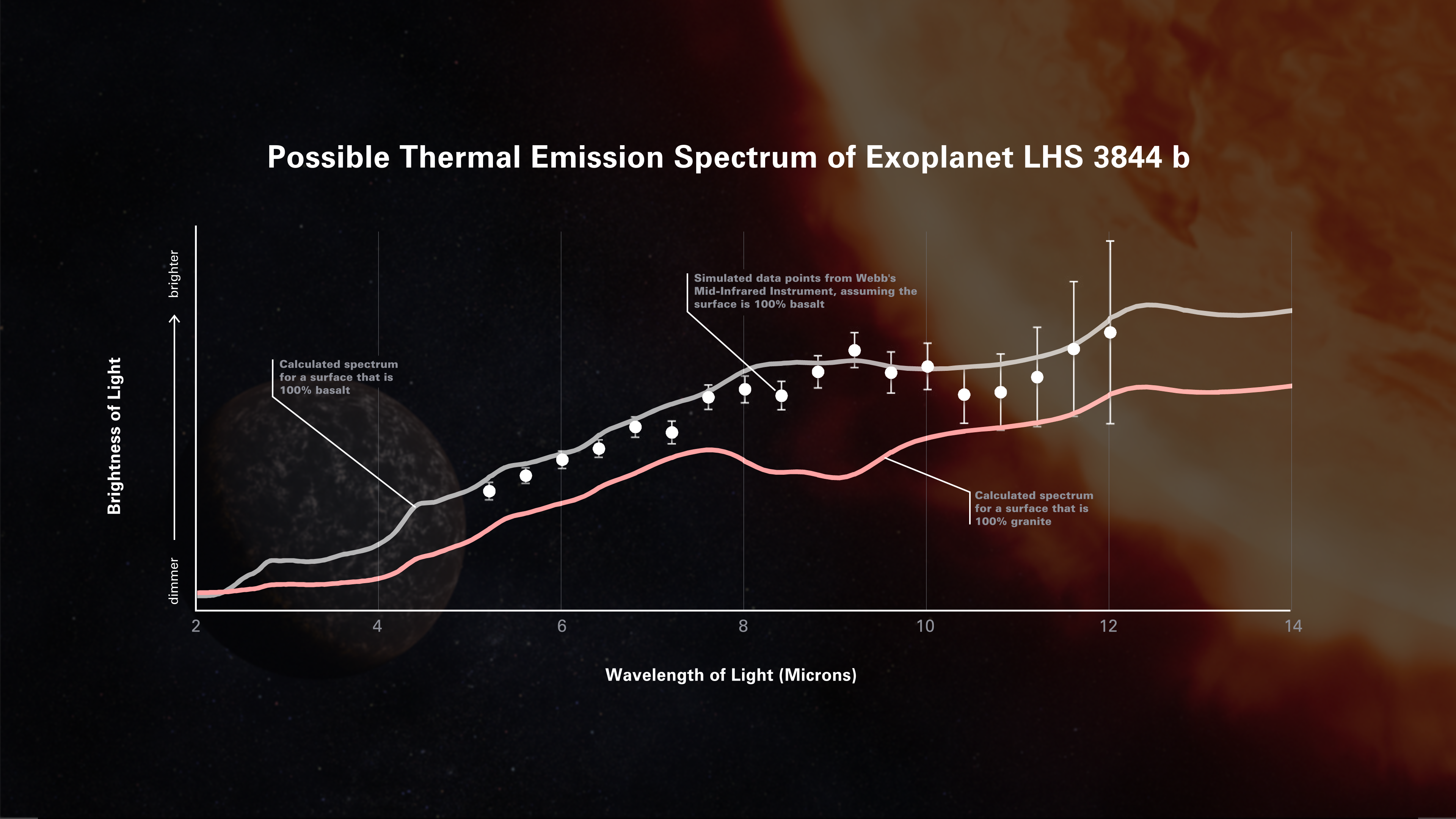
Possible thermal emission spectrum of the hot super-Earth exoplanet LHS 3844 b, as measured by Webb’s Mid-Infrared Instrument. A thermal emission spectrum shows the amount of light of different infrared wavelengths (colors) that are emitted by the planet. Researchers use computer models to predict what a planet’s thermal emission spectrum will look like assuming certain conditions, such as whether or not there is an atmosphere and what the surface of the planet is made of.
This particular simulation assumes that LHS 3844 b has no atmosphere and the day side is covered in the dark volcanic rock basalt. (Basalt is the most common volcanic rock in our solar system, making up volcanic islands like Hawaii and most of Earth’s ocean floor, as well as large portions of the surfaces of the Moon and Mars.)
For comparison, the gray line represents a model spectrum of basaltic rock based on laboratory measurements. The pink line is the spectrum of granite, the most common igneous rock found on Earth’s continents. The two types of rock have very different spectra because they are made of different minerals, which absorb and emit different amounts of different wavelengths of light.
After Webb observes the planet, researchers will compare the actual spectrum to model spectra of various rock types like these to figure out what the surface of the planet is made of.
About the Object
- R.A. PositionR.A. PositionRight ascension – analogous to longitude – is one component of an object's position.22:41:59.09
- Dec. PositionDec. PositionDeclination – analogous to latitude – is one component of an object's position.–69:10:19.59
- ConstellationConstellationOne of 88 recognized regions of the celestial sphere in which the object appears.Indus
- DistanceDistanceThe physical distance from Earth to the astronomical object. Distances within our solar system are usually measured in Astronomical Units (AU). Distances between stars are usually measured in light-years. Interstellar distances can also be measured in parsecs.49 light-years from Earth
About the Data
- Data DescriptionData DescriptionProposal: A description of the observations, their scientific justification, and the links to the data available in the science archive.
Science Team: The astronomers who planned the observations and analyzed the data. "PI" refers to the Principal Investigator.Simulated secondary eclipse observation of LHS 3844 b using MIRI LRS, assuming no atmosphere and a bare rocky surface covered in basalt. (Kreidberg, et al., Cycle 1 GO Proposal 1846 )
- InstrumentInstrumentThe science instrument used to produce the data.MIRI (simulated)
- Object NameObject NameA name or catalog number that astronomers use to identify an astronomical object.LHS 3844 b
- Object DescriptionObject DescriptionThe type of astronomical object.Hot super-Earth exoplanet
- Release DateMay 26, 2022
- Science ReleaseGeology from 50 Light-Years: Webb Gets Ready to Study Rocky Worlds
- CreditIllustration: NASA, ESA, CSA, Dani Player (STScI); Science: Laura Kreidberg (MPIA), Renyu Hu (NASA-JPL)
Related Images & Videos

Illustration of Exoplanet 55 Cancri e and Its Star
Illustration showing what exoplanet 55 Cancri e could look like, based on current understanding of the planet. 55 Cancri e is a rocky planet with a diameter almost twice that of Earth orbiting just 0.015 astronomical units from its Sun-like star. Because of its tight orbit, the...
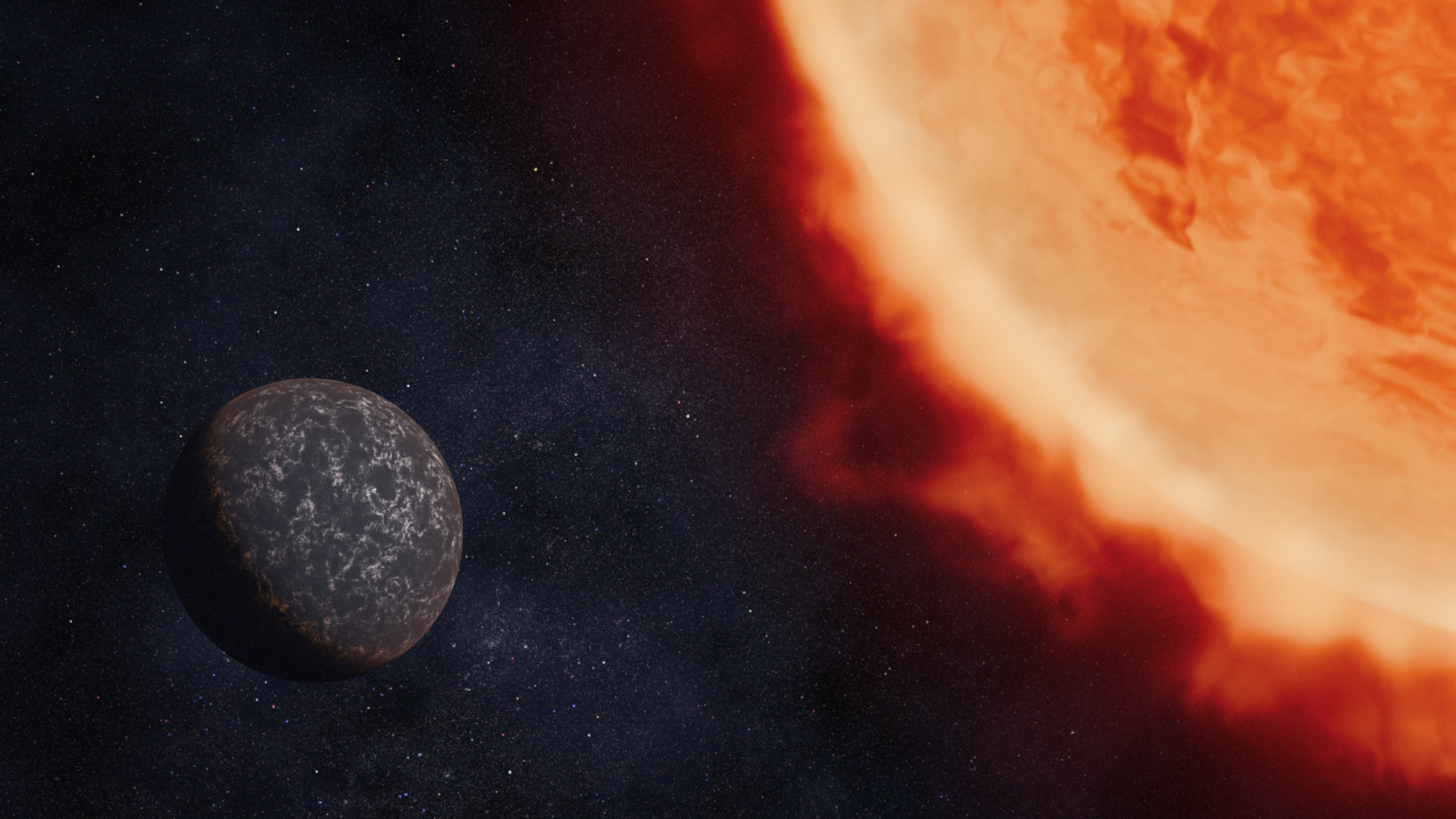
Illustration of Exoplanet LHS 3844 b and Its Star
Illustration showing what exoplanet LHS 3844 b could look like, based on current understanding of the planet. LHS 3844 b is a rocky planet with a diameter 1.3 times that of Earth orbiting 0.006 astronomical units from its cool red dwarf star. The planet is hot, with dayside...
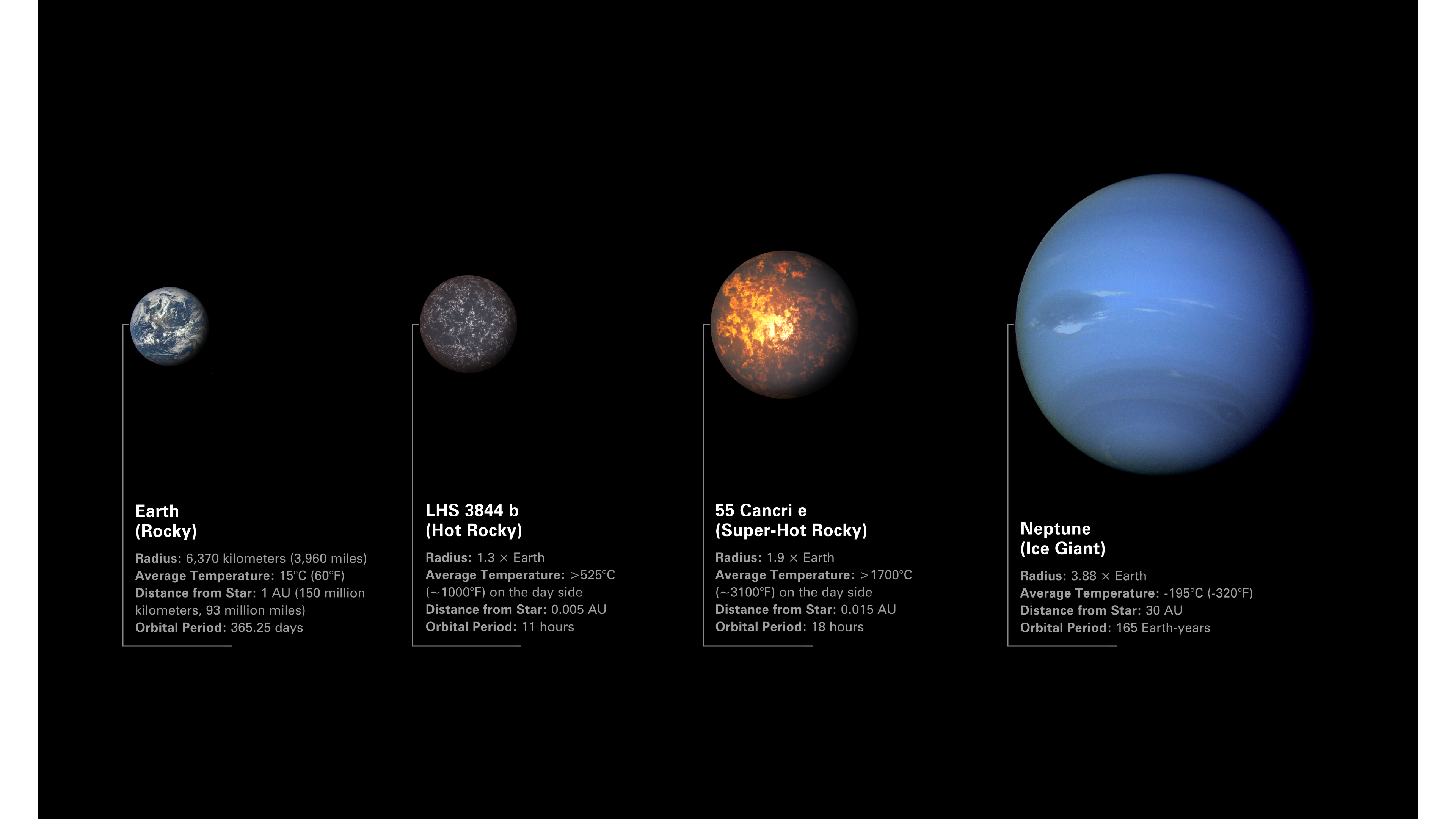
Comparison of Exoplanets 55 Cancri e and LHS 3844 b to Earth and Neptune
Illustration comparing rocky exoplanets LHS 3844 b and 55 Cancri e to Earth and Neptune. Both 55 Cancri e and LHS 3844 b are between Earth and Neptune in terms of size and mass, but they are more similar to Earth in terms of composition. The planets are arranged from left to...
Share
Details
Laura Betz
NASA’s Goddard Space Flight Center
Greenbelt, Maryland
laura.e.betz@nasa.gov
NASA, ESA, CSA, Dani Player (STScI)
Laura Kreidberg (MPIA), Renyu Hu (NASA-JPL)












